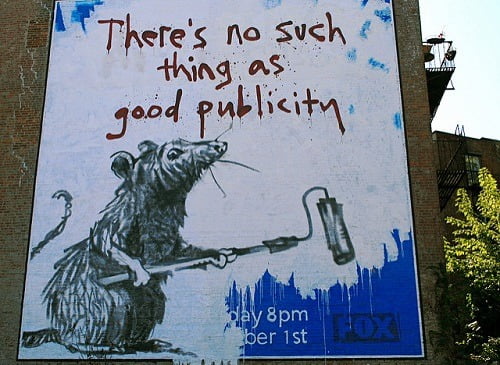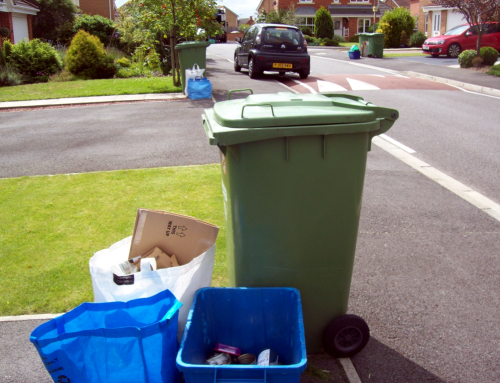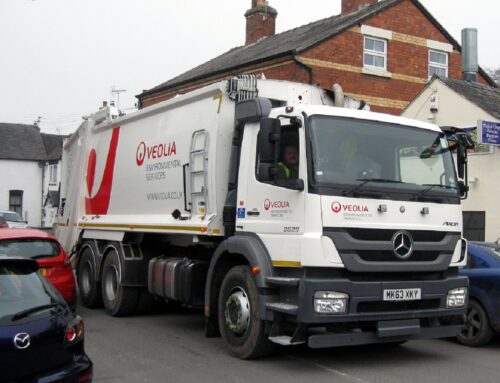by Peter Jones
7 minute read
Media coverage of recycling hasn’t got off to a great start in 2016. After a short hiatus following my tussle with Richard Littlejohn last year, my complaints activity has unfortunately had to kick into overdrive. For the time being I’ll focus on four stories with which I’ve been able to make some headway so far this year – three papers’ coverage of recycling contamination, and one daft story about rats.
On 15th January, the Daily Mail’s Environment Editor Colin Fernandez filed a story under the excited headline:
“Great green rubbish farce: Hundreds of thousands of tons of recycling is burned or buried after being carefully sorted by homeowners.”
The story derived from the latest Defra local authority waste statistics published in December 2015, which showed an increase in the quantity of rejected material from local authority recycling.
Nothing of the sort
Unfortunately, the Mail failed to understand what the figures meant, assuming that the rejected material was:
- the result of trucks being “turned around at the gates of a re-processing plant” because they contain “scraps of food waste, plastic or fabric”; and thus
- mostly composed of recyclables,
and therefore represented a huge waste of effort on the part of householders. The story was also issued (in slightly more sober terms) through the Associated Press and picked up by the Daily Telegraph and Daily Express the following day.
If it was true, it would be cause for some concern – although the 338,000 tonnes of rejects reported in 2014/15 are barely 3% of the 11m tonnes of recycling collected by councils. None of the newspapers supplied this important context. And of course, the Mail looked to blame the trend on confusion caused by people being required to use multiple bins.
However, as will be obvious to anyone with a reasonable level of familiarity with recycling, most of the rejects are the product of the MRF sorting process. If MRFs are working as intended, the rejects should be non-recyclable contamination, not recyclable material. The Mail‘s argument that it was all about confusion over different bins also founders when you observe that the authorities that report the highest proportion of contamination tend to be those with “simple” co-mingled systems.
Going with the flow
Digging deeper into the WasteDataFlow returns helps to prove the point. Adding together rejects figures from Questions 19, 35, 58 and 100 shows the following breakdown of results:
| Process Rejects (to landfill) | 104,261 | 30.9% |
| Process Rejects (to energy recovery) | 180,591 | 53.5% |
| Process Rejects (other) | 15,135 | 4.5% |
| Gate Rejects – HWRC-type materials | 34,964 | 10.4% |
| Gate Rejects – Items collected for reuse | 818 | 0.2% |
| Gate Rejects – Dry recycling | 1,537 | 0.5% |
So in fact, only 0.5% of reported rejects are gate rejects of material that is likely to be kerbside dry recycling . Rather than showing that “it is cheaper to bury the rubbish rather than filter them out” the figures show the results of councils’ efforts to perform exactly this filtering function.
We cannot know how much of the process rejects be made up of material that could possibly be recycled – but the economics of paying to throw away material that could be sold as recycling make this fairly improbable. The reasons for the increase in rejects do merit some investigation. I suspect it may be connected with the MF Regulations bringing about a greater focus on quality, leading to more contamination being extracted rather than finding their way into the output streams, but I would be interested to hear other explanations.
Turn of phrase
When I raised complaints about these articles, the Telegraph quickly accepted that they hadn’t got the facts straight, and removed the piece. The Express really should have known better, as they ran a very similar story last year, and had to amend it after I raised a complaint. However, both they and the Mail argued the toss at some length before eventually agreeing to retract the stories and issue corrections. I don’t think that there was necessarily mendacity at play here: both seem to have been genuinely confused about what “rejects” are, and how they arise – although they didn’t take much trouble to investigate the issue before rushing to press.
There’s a lesson for those of us in the resources industry. We forget that we’re involved in a complex supply chain whose components and rationale may be obvious to those involved, but completely opaque to those outside. We therefore need to be very careful about how we communicate regarding difficult issues like contamination.
I’ve seen local authorities using the description of recycling being “turned away” due to contamination as a shorthand for MRF rejects, but talking about rejects in these terms is risky, as it gives rise to the impression that recycling that they have separated is being thrown away. Instead, we should be emphasising the importance of putting the right things in the right bins, and the cost and effort involved in having to sort the contrary items out later.
Smelling a rat
More recently, I’ve been in touch with the Mail about their coverage of three weekly residual waste collections in Bury. On 5th February, they approvingly reported concerns raised by Unite regarding an increase in complaints about rats in Bury, and the link the union sought to make between the rat statistics and the introduction of three weekly bin collections.

Good publicity for local authority recycling services has been in short supply. Photo by caruba (CC BY-NC 2.0), via Flickr.
I never thought I would live to see the day that the Daily Mail reported claims made by a union as gospel! Unfortunately, the story is rubbish, and exactly the same set of unsubstantiated concerns was raised (and debunked) when fortnightly collections were first on the agenda. It’s unsurprising, if a bit demoralising, to see them making a return now.
Given that complaints about rats have increased in Bury, there are three simple questions that the Mail should have asked before claiming a connection with waste collections:
- Is the rat problem in Bury different from other places that haven’t gone three-weekly? There is no good national data, but a cursory internet search finds reports that nearby Bolton has more rat complaints, but hasn’t changed bin collection frequencies.
- Is there a causal mechanism to link less frequent residual waste collections (especially when accompanied by weekly food waste collections, as in Bury) with an increase in rat numbers? With much of the food taken out, what would be attracting, let alone sustaining them? Are the rats chewing through wheelie bins? Scaling the sides and opening the lids? The Mail did not explain….
- Are there factors other than a change in bin collections that might better explain an increase in rats? In fact, the article mentions that warm winters and increasing poison resistance as explanations of a larger rat population, while wet weather tends to drive rats out of sewers.
Ex-ratted
Despite this, the Mail claimed a provable link with bin collections. As a result of a complaint, I was able to get a number of changes made, including replacing the phase:
“And statistics prove it, as the council now has almost 20 per cent more complaints about rats than before making the three-weekly switch”
with the rather more accurate:
“Statistics show that the council has had almost 20 per cent more complaints about rats than before making the three-weekly switch. However, other councils which have kept more frequent bin collections have also seen increases in complaints, and Bury has fewer complaints than some other nearby councils.”
No doubt we’ll see more of this sort of thing as other local authorities consider reducing their residual waste collection frequency, and I hope I won’t be the only one pointing out the absence of evidence to support such claims.
Meanwhile, I have several more complaints currently in hand on a flurry of spurious stories, prompted by the great debate over the UK’s position in the EU, about “new” proposals regarding extra bins and pay as you throw schemes emanating from Europe – but more on those another time.






Leave A Comment